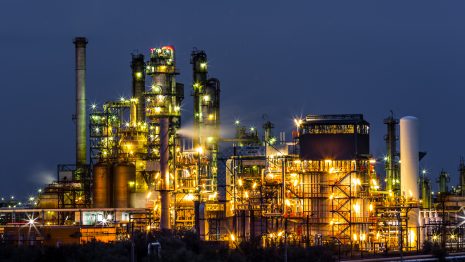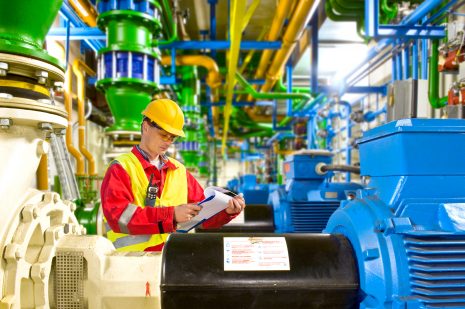The Industrial Internet of Things: The Opportunities Connected Components Can Create
 The Internet of Things (IoT) has taken the consumer world by storm over the past few years, filling households, vehicles, and office and retail spaces with Internet-connected smart devices that interact with people and environments alike. The tech trend has been adopted — and expanded on — by industrial organizations large and small, combining sensors, networks and analytics to facilitate smarter, safer and more efficient operations. Known as the Industrial Internet of Things (IIoT), this segment of IoT is expected to bring about a new era of automated factories with unprecedented supply chain management capabilities, asset tracking and self-healing equipment.
The Internet of Things (IoT) has taken the consumer world by storm over the past few years, filling households, vehicles, and office and retail spaces with Internet-connected smart devices that interact with people and environments alike. The tech trend has been adopted — and expanded on — by industrial organizations large and small, combining sensors, networks and analytics to facilitate smarter, safer and more efficient operations. Known as the Industrial Internet of Things (IIoT), this segment of IoT is expected to bring about a new era of automated factories with unprecedented supply chain management capabilities, asset tracking and self-healing equipment.
Industrial markets, including automotive, food and beverage, shipbuilding, material handling, and semiconductor segments, are uniquely situated to take advantage of connected capabilities. Machines have had sensors recording data since automation first came about during the industrial revolution. However, the key difference is that in the past data would be recorded and filed away, while, today, sensor technology and data communication capabilities enable information to be gathered, transmitted and analyzed in real time so people can make rapid decisions.
Data-Driven Upkeep
Predictive maintenance is a prime example of how sensors, automated data collection and cutting-edge analytics can work together to make manufacturing operations more efficient. This has been especially useful in the petrochemical environment due to the potential for catastrophic failure. In oil refineries, where corroded valves often cause leaks, sensors are placed around valves to alert when they reach a dangerous level of corrosion. By using an IIoT approach, though, corrosion can be addressed before it turns catastrophic. For example, if a refinery is near a coastline, with a lot of salt in the environment, corrosion will be a more aggressive problem than if it were in the middle of the country. Sensors that monitor the 50,000 or so valves in that refinery can gather data to predict how the valves will withstand the conditions specific to its location. The data will be precise enough to help personnel make decisions proactively, rather than waiting for a valve to fail or replacing them unnecessarily.
Reducing Risk

The IIoT approach is also changing how manufacturing sites operate, with a focus on keeping employees out of harm’s way while streamlining operations. With more sensors that both read and communicate critical information, fewer people will have to be in potentially hazardous situations. Fewer engineers will need to use handheld detectors to identify gas leaks or manually check potentially problematic equipment, and this will translate into less risk of injury in refineries.
And because this critical data is being collected and sent to the cloud, it can be accessed and acted on from anywhere — so plants and facilities can be run remotely. For example, there are a lot of paper plants in rural Georgia that have a difficult time attracting skilled engineers to relocate there. With an IIoT setup, however, a virtual mill can exist within a high-rise building in Atlanta, and engineers can monitor and run a plant remotely. Service companies can support repair and maintenance on site instead of highly trained engineers on standby at each plant.
Expanding Capabilities
While IIoT is already being adopted by more traditional industrial markets, it will be just a matter of time until more consumer-facing verticals use the connected technology in their operations. Already some food processing manufacturers are using IIoT to visualize and monitor how a product is being made in order to reduce waste, increase throughput and expand their offerings. Markets want more production flexibility. Instead of having to produce large batches of a product in one location, manufacturers could potentially produce smaller batches that support local markets. This will allow manufacturing facilities to be more nimble, and production will more customized, like a new car with custom options. The active and purposeful connection of multiple devices, along with the potential for scalability and automation, is what sets IIoT apart from the wider IoT space. But the increased connectivity and integration in facilities also creates the need for security and redundancy to be built into IIoT solutions. Since data is no longer stored within the four walls of a facility, and because so many critical operations rely on wireless communications, systems must be put in place to address potential failures. (A future blog post will discuss the steps that can be taken to ensure a secure and reliable IIoT-integrated facility.) Essentially, IIoT is creating substantial opportunities in traditional industrial markets, but the approach will soon be adopted by more unexpected verticals outside the industrial sector. Potentially, more assets, cities and consumer-facing verticals will shift to more of an IIoT approach rather than just IoT, with the two networks and infrastructures merging in interesting ways.